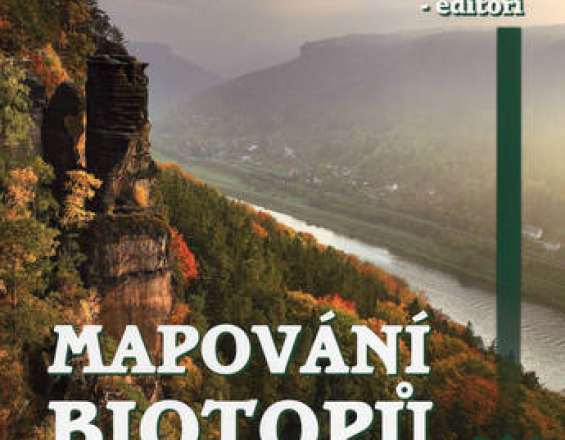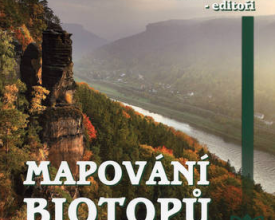
Habitat mapping as a necessary prerequisite for quality Natura 2000 establishment

The solution is focused on the Natura 2000 establishment in one of the newer EU countries – the Czech Republic. Despite the fact that Natura 2000 implementation is a legal obligation, respective directives give a certain freedom on how to implement it in each EU country. Therefore, the solution shows not the European, but the country-wide approach as an inspiration.
Habitat Mapping in the Czech Republic represents an extensive and ambitious project set up in relation with the establishment of the Natura 2000 network in the country. However, its significance far exceeds the mere intent to acquire data in order to identify the sites of Community importance. The current habitat mapping layer is a source of information regarding the distribution and quality of habitats all over the Czech Republic.
Natura 2000 establishment shall be built on strong technical foundations. For example, one of the necessary steps in the process is a country-wide field inventory of habitat types of Community importance.
Contexto
Défis à relever
1) High number of mappers, i.e., demanding management of the process (over 750 field workers).
2) Quality of individual surveys varied despite adherence to standardised methodology.
3) Short time to reach the result - only 4 years till the expected accession to the European Union.
Ubicación
Procesar
Summary of the process
The methodology is a prerequisite for the field mapping of which the habitat mapping layer is a result.
Building Blocks
Standardized country methodology for regular habitat mapping
Czechia has developed tailor-made methodology on habitat mapping that is carried out as a field inventory in the whole country. Only trained experts are involved in the process, and all results are verified.
The result is a country-wide habitat layer giving fine information about each natural and seminatural habitat occuring in the country. That is now one of the most important datasets on which the national nature conservation builds its strategy and plans measures both inside and outside of protected areas.
Enabling factors
The whole approach was developed as a part of the EU accession process. Therefore, the whole task was supported only from the national budget which allowed successful implementation. Such a large task would have not been possible to manage with a project restricted budget.
Lesson learned
When the process started, one of the challenges was to change the mindset of national experts and agree on an innovative approach that was significantly different from the traditional one (unsystematic field research activities). In that case, a legal obligation to establish Natura 2000 following a text of the EU Nature Directives helped. Experts understood the Directives and proactively took advantage of this process (not to perceive it as a burden only).
Habitat mapping layer
The current habitat mapping layer is a source of information regarding the up-to-date distribution and quality of habitats all over the Czech Republic.
More information is available in the English summary of the publication at the following link: https://www.researchgate.net/publication/47048702_Mapovani_biotopu_v_Ceske_republice_vychodiska_vysledky_perspektivy
Enabling factors
- Continuous financial support of the Ministry of the Environment of the Czech Republic.
- Strong technical and well-managed capacity of the Czech Nature Conservation Agency at the country level.
Lesson learned
Once you have finalized such a habitat data layer and make it publicly available, you should set the new and review quality standards to keep the information regularly updated (ideally before it is released).
Impacts
The habitat mapping layer represents a highly useful source when providing summary data and analyses for international projects and reports that require data on the whole Czech Republic. All stakeholders can benefit from the new data source which is publicly accessible.
The habitat mapping layer also supports cross-border cooperation by providing detailed information about the state of vegetation. This was proven during the meetings of the Visegrad Group (Czech Republic, Hungary, Poland and Slovakia) and during the negotiations with other neighbours (Saxony, Bavaria), where the representatives dealt with the cross-border connectivity of Natura 2000 sites.
Last, but not least, number of training sessions and field trips were organized for experts, both at the regional and national levels, along with the field checks of the surveyed sites. Over 750 persons were involved in the mapping process and so trained in standardised national methodology.
The habitat mapping become a standardised process in which the country is re-mapped in a twelve-year-long period. It allows to monitor trends and also development in each plot of the country.
Beneficiaries
The whole nature conservation as well as stakeholders in the country (e.g. academic institutions, NGO, foresters, etc.). Data about all natural and seminatural habitats in Czechia are available and accessible.
Story
Habitat mapping in the Czech Republic represents an extensive and ambitious project set up in relation with the establishment of the Natura 2000 network in the country. However, its significance far exceeds the mere intent to acquire data in order to identify the sites of Community importance. The current habitat mapping layer is a source of information regarding the distribution and quality of habitats all over the Czech Republic. In addition to the indication of a habitat in a map, the data on its representativity, conservation status and other characteristics are recorded. The mapping carried out served mainly to propose the Natura 2000 network (natural habitat types), but also for nature conservation in its broadest sense. It was done in an outstanding quality compared to all 28 EU Member States. The outcomes of the habitat mapping in form of statistical data, for both the whole Czech Republic and individual regions, can be found in chart 4.1. These detailed statistics do not show only the habitat area, but also the qualitative index of representativity, along with the assessment of the balance between the habitat area with a specified level of representativity and the habitat area in a region and the whole country. The respective habitat maps show the 60 natural habitats of the Czech Republic with their areas and presence in the biogeographical regions in the country. The objective of this habitat mapping was not merely to acquire data for the purposes of the Natura 2000 network in the Czech Republic, but also to create a sustained and up-to-date source of quantitative and qualitative data referring to habitats in the entire territory of the Czech Republic. It is thus indispensable to carry out updates of the habitat mapping layer. The current methodology for updates was drawn up at the turn of the year 2006. Compared to the mapping methodology, the updated methodology focuses more on the assessment of degradation, structure and functions of individual habitats ("typical species”), and newly on the assessment of the species characteristic for the respective habitats.








